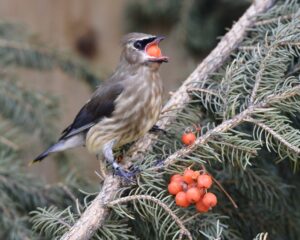by Courtney Collins
There are five groups that make up the birds-of-prey species; these include Accipiter hawks, Buteo hawks, eagles, falcons, and vultures. Eagles and vultures are sometimes combined into a single group.2 Each of these species groups have defining characteristics that make them unique. Accipiters and falcons are the smaller species of all birds-of-prey3, but there are still some key differences between these two groups.
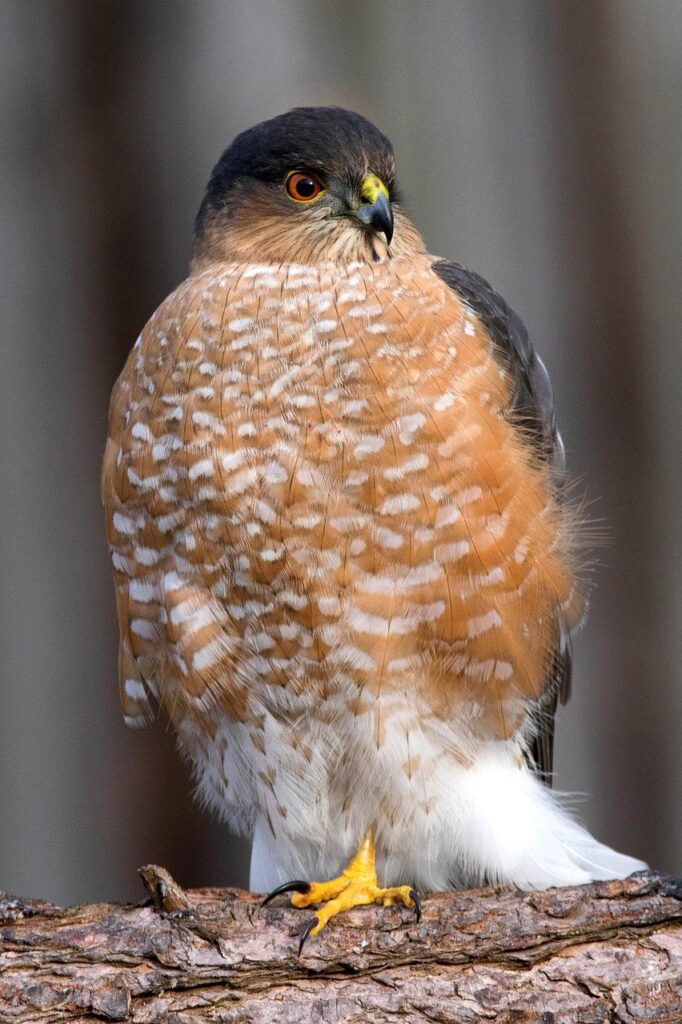
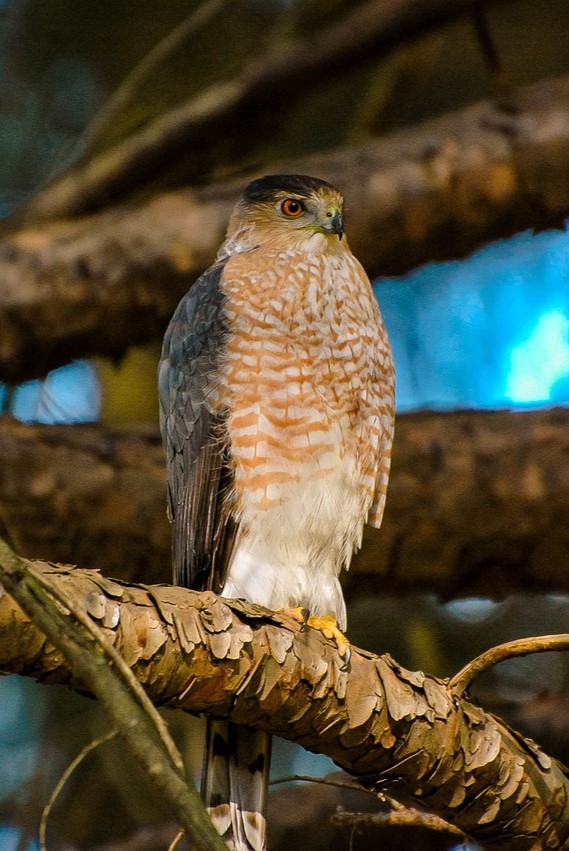
Sharp-shinned hawk (left), Cooper’s hawk (centre), American goshawk (right). Public Domain.
Alberta is home to three Accipiter hawks: the sharp-shinned hawk (Accipiter striatus), Cooper’s hawk (Accipiter cooperii), and American goshawk (Accipiter atricapillus; previously known as the northern goshawk).4 These species are known for their preference of forest habitat, striking red eyes, long tails,6,7,8 and aerial hunting skills.9
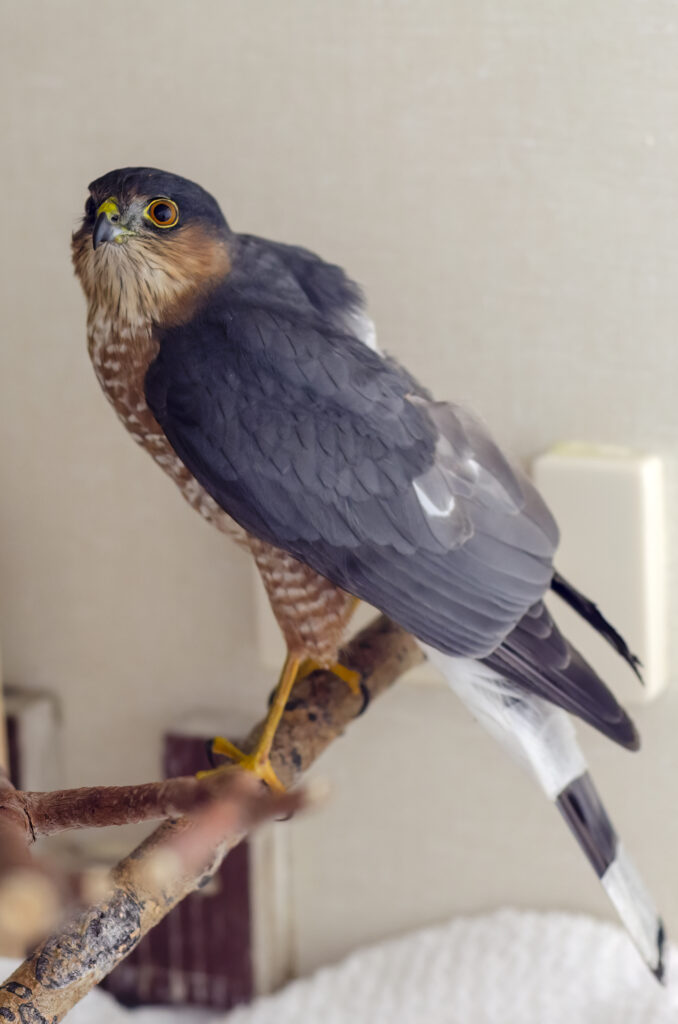
Sharp-shinned hawks are the smallest of the three Accipiters and have a slate grey/blue back with a rust and white coloured belly and underside. This species, like all the Alberta Accipiters, have dark, thick banding on the outside of their tail and light and dark, thick banding on the inside. These birds are generally slightly larger in size than a jay (and similar in size to the American kestrel, mentioned below).6
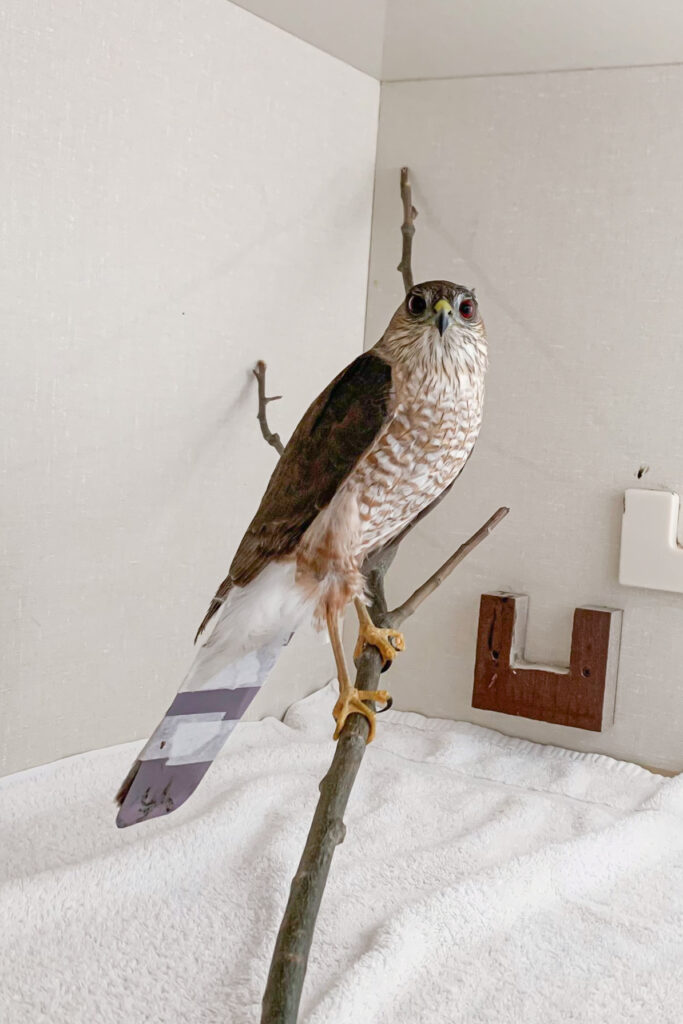
Cooper’s hawks look similar to sharp-shinned hawks but are noticeably larger and closer to the size of a crow. While this species prefers forest habitats, it can also be found in ‘leafier’ backyards.7 Sharp-shinned and Cooper’s hawks can be difficult for even experienced birders to tell apart.10
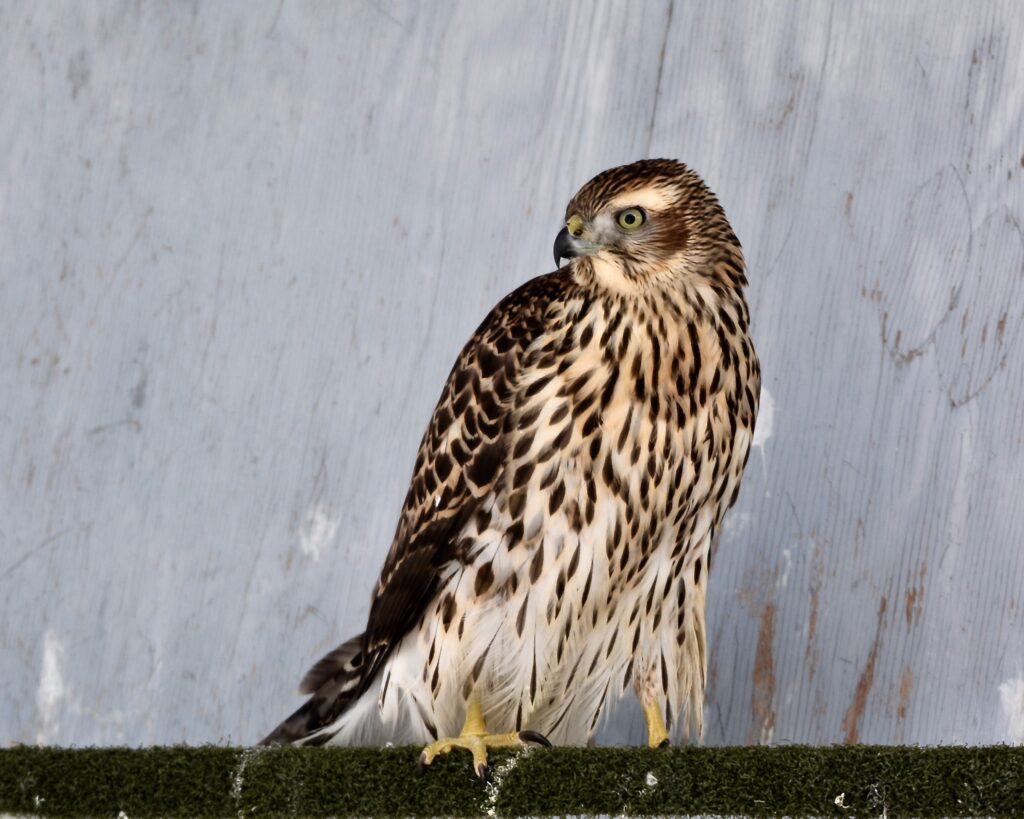
American goshawks are the largest of the three species in Alberta and have a grey/white colouration pattern. This species has a darker back, often slate grey or dark brown with a white underside. They also feature a white ‘eyebrow.’ This species also prefers a forest habitat, with a preference for coniferous forests.8
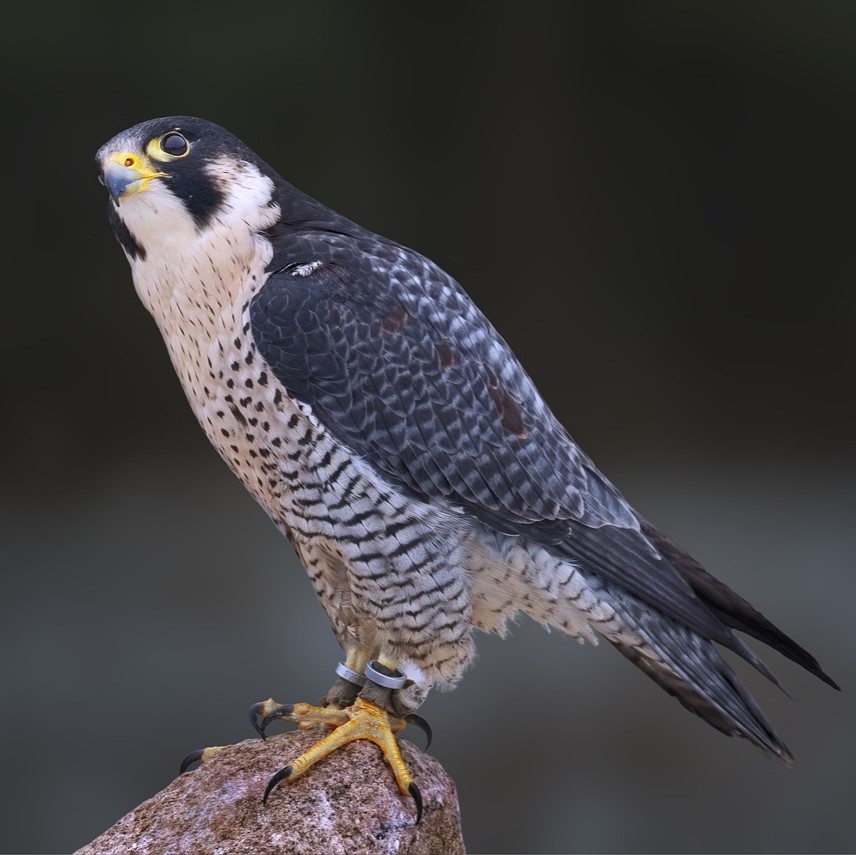
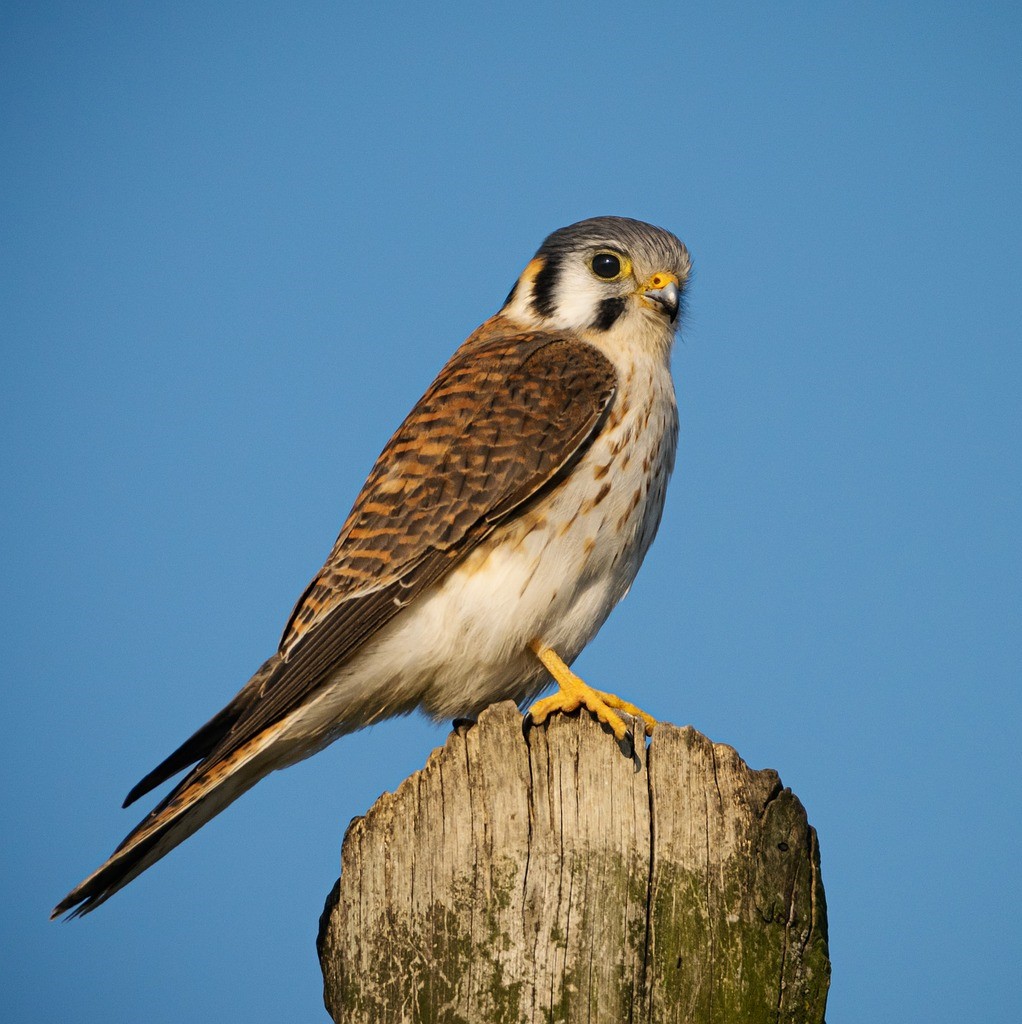
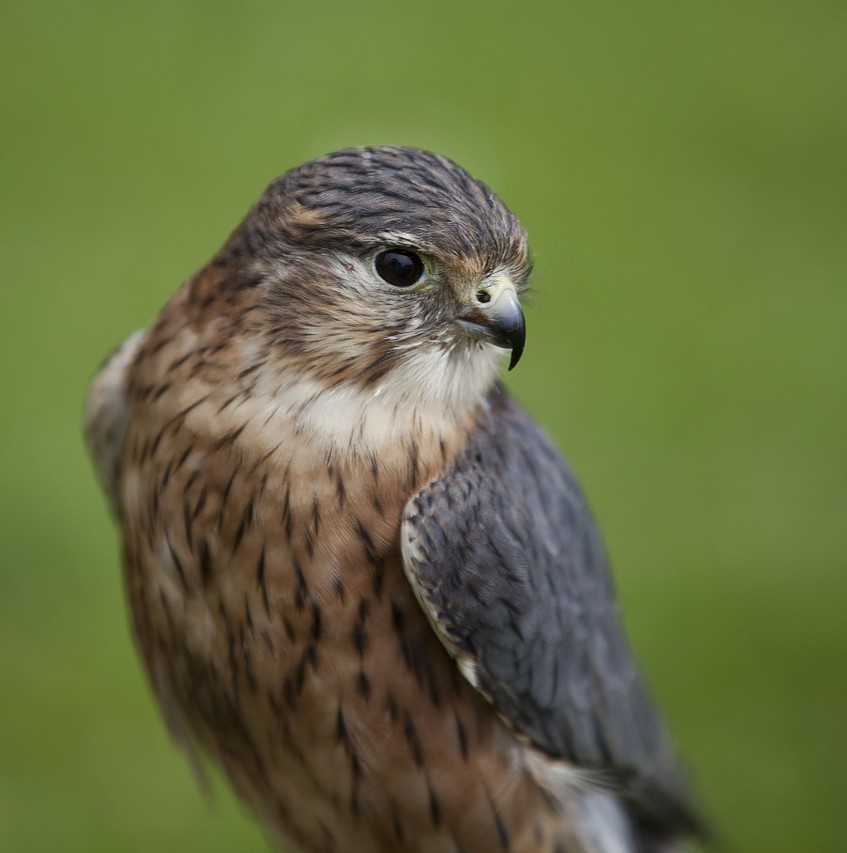
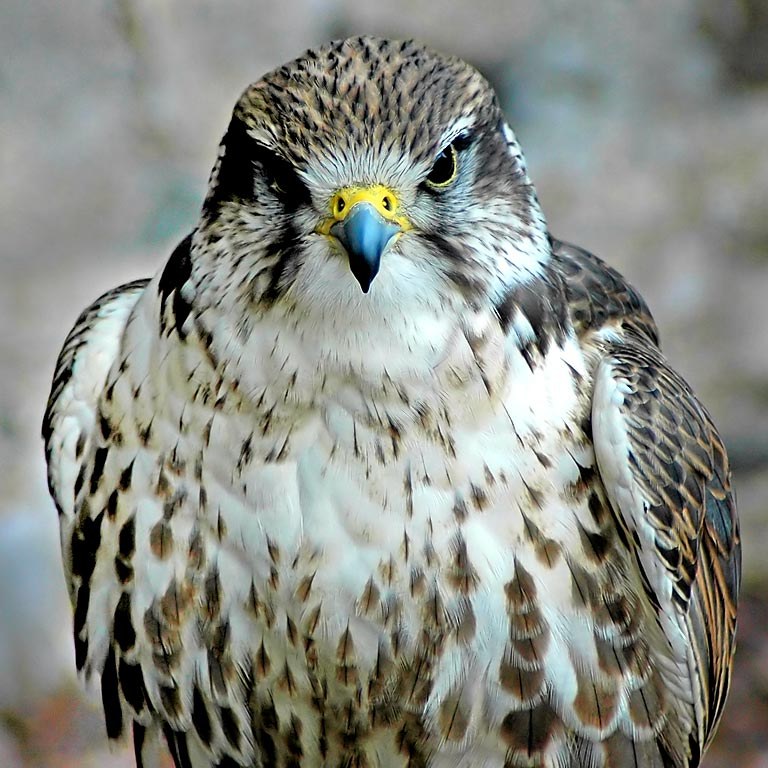
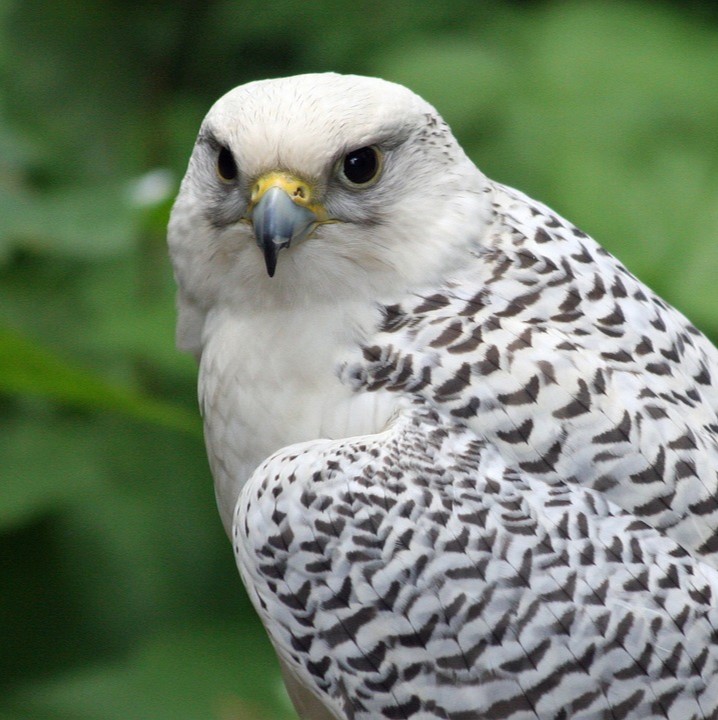
Peregrine falcon (top left), American kestrel (top centre), merlin (top right), prairie falcon (bottom left), gyrfalcon (bottom right). Public Domain.
Alberta is also home to five falcon species, including: the peregrine falcon (Falco peregrinus), American kestrel (Falco sparverius), merlin (Falco columbarius), prairie falcon (Falco mexicanus), and gyrfalcon (Falco rusticolus). These birds are fast flyers and also have excellent aerial hunting skills.11
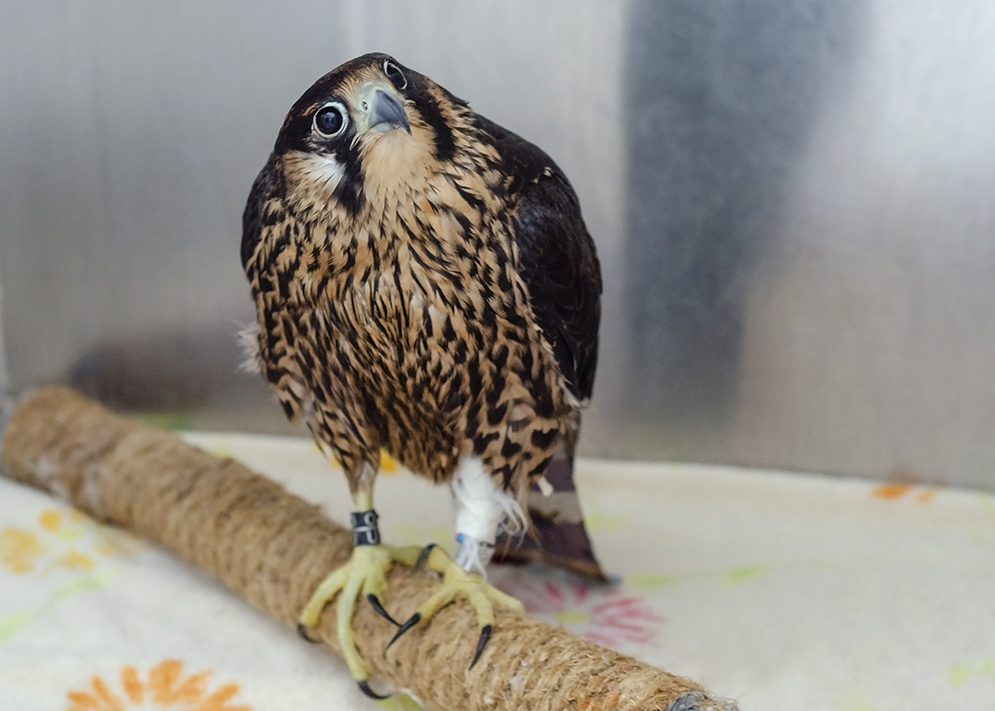
Many will have heard of the peregrine falcon, one of the fastest animals in the world. This amazing falcon can reach speeds of 320 kilometres per hour!11 These speeds are difficult to comprehend, and yet, these birds use this to their advantage when diving for prey – a truly spectacular sight. Peregrine falcons are found throughout Alberta and are quite adaptable in where they make their home, with some even nesting in large cities. These birds have a slate grey back and wings with a cream and dark speckled underside.12

American kestrels are the smallest falcon in Alberta and have a unique colouration; females are rust/medium brown with a slate blue/grey crown while males have dark slate blue/grey on the crown and outer wings with rust and dark speckles on the inner wings.13 These small falcons are also adaptable and occur in a wide variety of habitats. If you’re lucky, you may even see one of these small raptors catching its prey mid-air!11
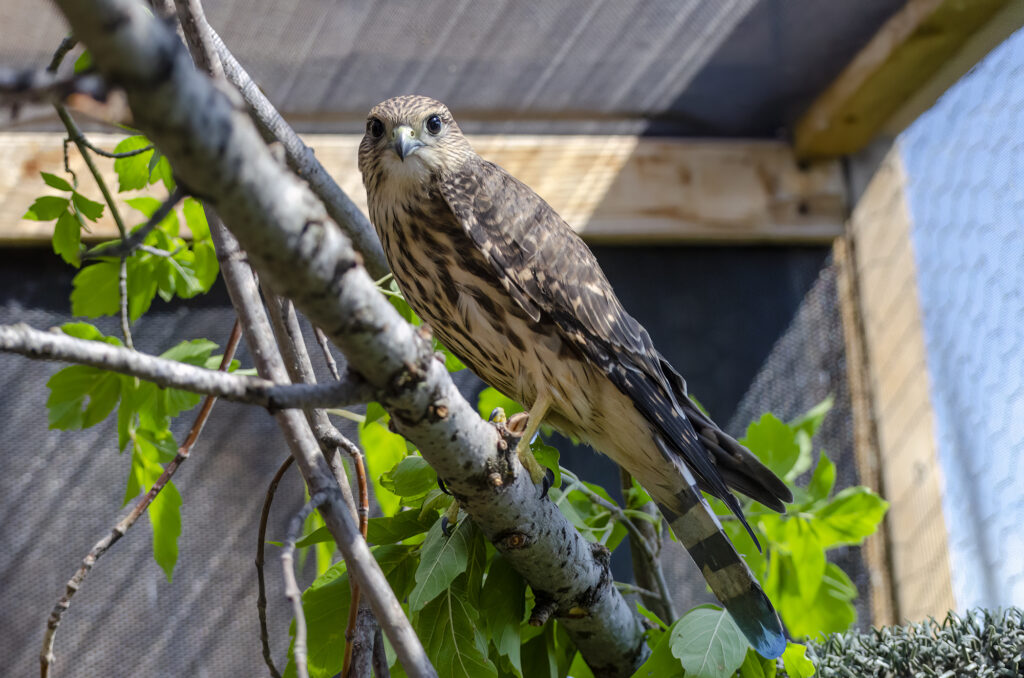
Merlins, the stockiest of the falcon species, are grey/slate blue (males) or medium brown (females) on the upper parts of their body with paler cream and medium brown speckled undersides.13 These falcons are known for their aggressive and ‘take no prisoners’ hunting style; like all falcons, they have impressive flying skills.11 This species, similar to peregrine falcons and American kestrels, are also adaptable in their habitat.11
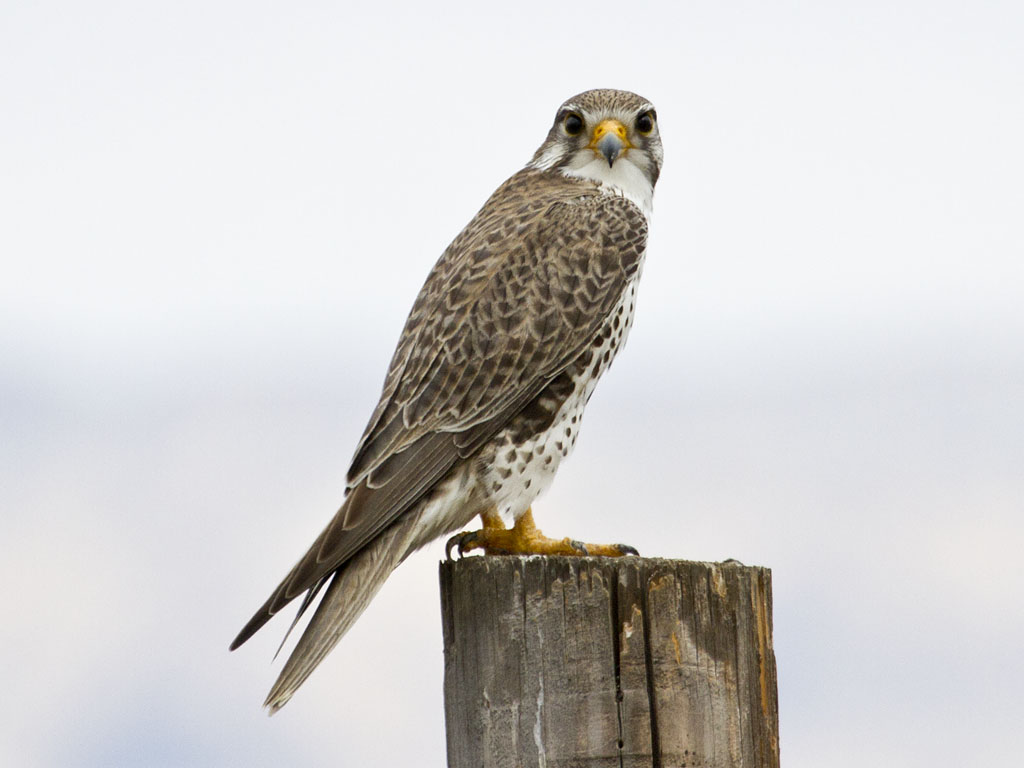
Prairie falcons are more selective, and prefer to make their home in prairies and grasslands. These birds also catch their prey mid-air and will aggressively defend their territories. These falcons have a medium brown back and wings with some dark speckling and a cream and speckled underside.11
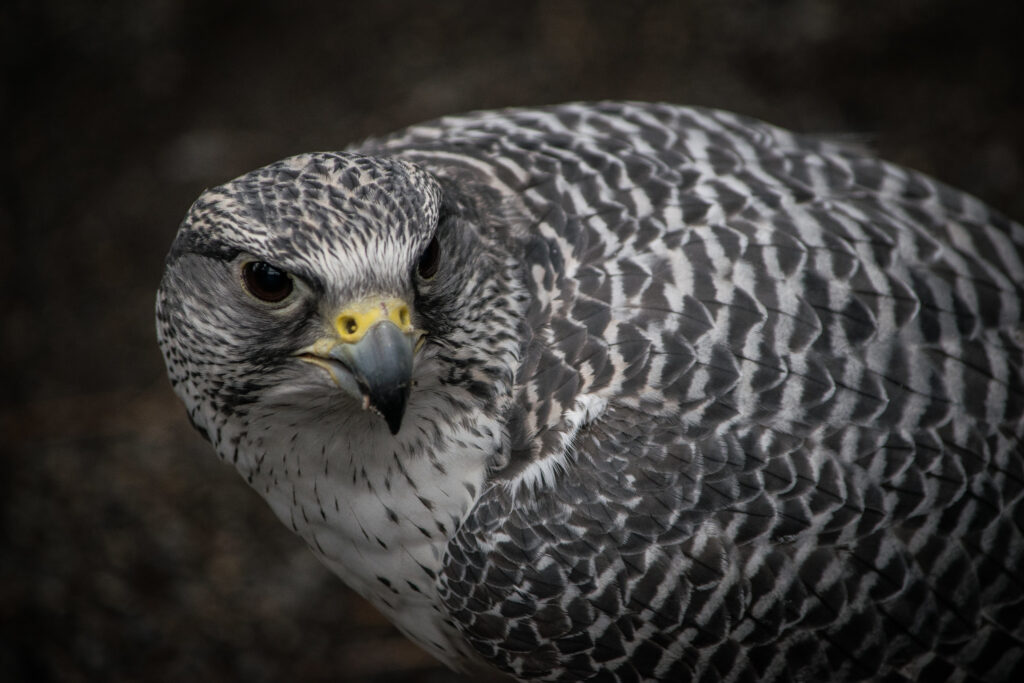
Gyrfalcons are the largest falcon11 and appear in either a grey or white morph. The grey morph has greyer colouration with some white throughout, while the white morph is mostly white colouration with some grey/dark throughout.15 The colouration of this bird may have you thinking about snow – an indication of its preferred arctic habitat.11
Happy bird-watching!
Footnotes
- Bobby Brown & David Browno, “How To Identify the 5 Major Groups of Raptors”, LycoBirds, 2023.
- Pete Dunne, “Three Basic Ways to Identify Hawks, Eagles, Falcons, and Other Raptors”, Audubon, 2016.
- Pete Dunne, “Three Basic Ways to Identify Hawks, Eagles, Falcons, and Other Raptors”, Audubon, 2016.
- Wikipedia, “List of birds in Alberta”, Wikipedia, 2023.
- Pete Dunne, “Three Basic Ways to Identify Hawks, Eagles, Falcons, and Other Raptors”, Audubon, 2016.
- All About Birds, “Sharp-shinned Hawk Identification”, The Cornell Lab, n.d.
- All About Birds, “Cooper’s Hawk Identification”, The Cornell Lab, n.d.
- All About Birds, “American Goshawk Identification”, The Cornell Lab, n.d.
- Urban Raptor, “Accipiters”, Urban Raptor, 2021.
- Project FeederWatch, “Sharp-shinned Hawk and Cooper’s Hawk”, The Cornell Lab, n.d.
- Nature Blog Network, “Alberta is home to 5 types of falcons: Peregrine Falcon, American Kestrel, Merlin, Prairie Falcon, and Gyrfalcon”, HummingbirdsPlus, 2023.
- All About Birds, “Peregrine Falcon Identification”, The Cornell Lab, n.d.
- All About Birds, “American Kestrel Identification”, The Cornell Lab, n.d.
- All About Birds, “Merlin Identification”, The Cornell Lab, n.d.
- All About Birds, “Gyrfalcon Identification”, The Cornell Lab, n.d.



